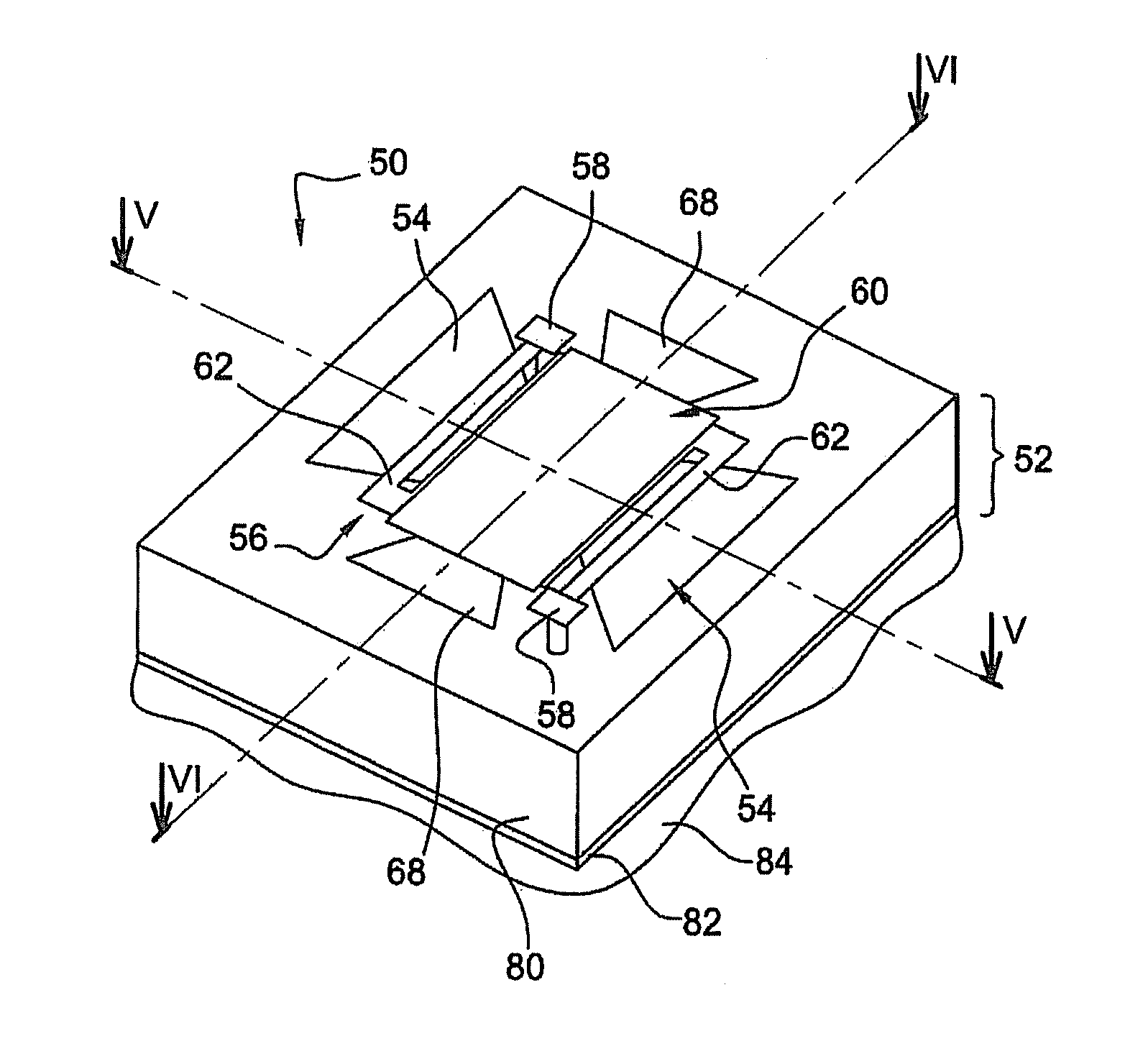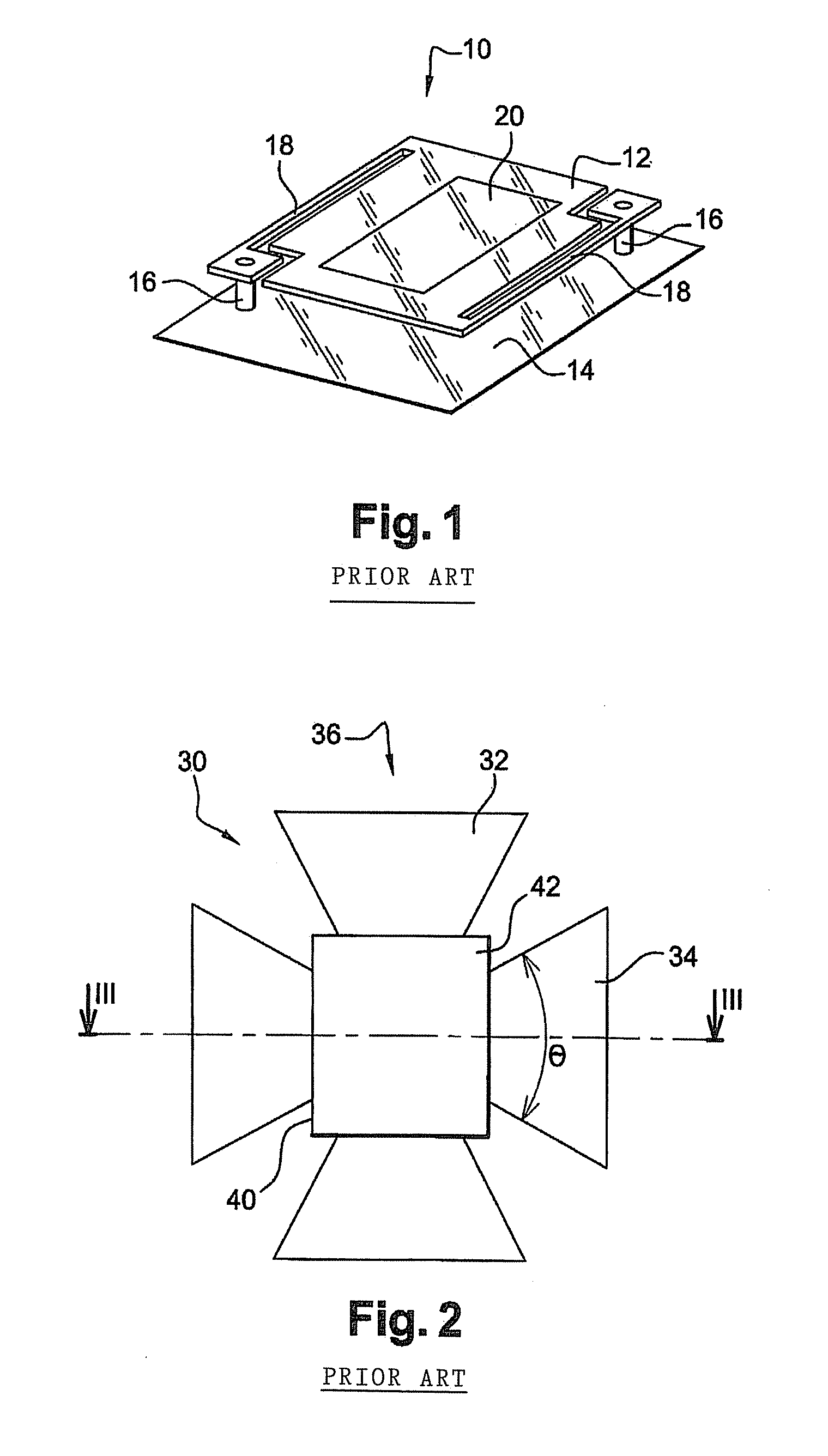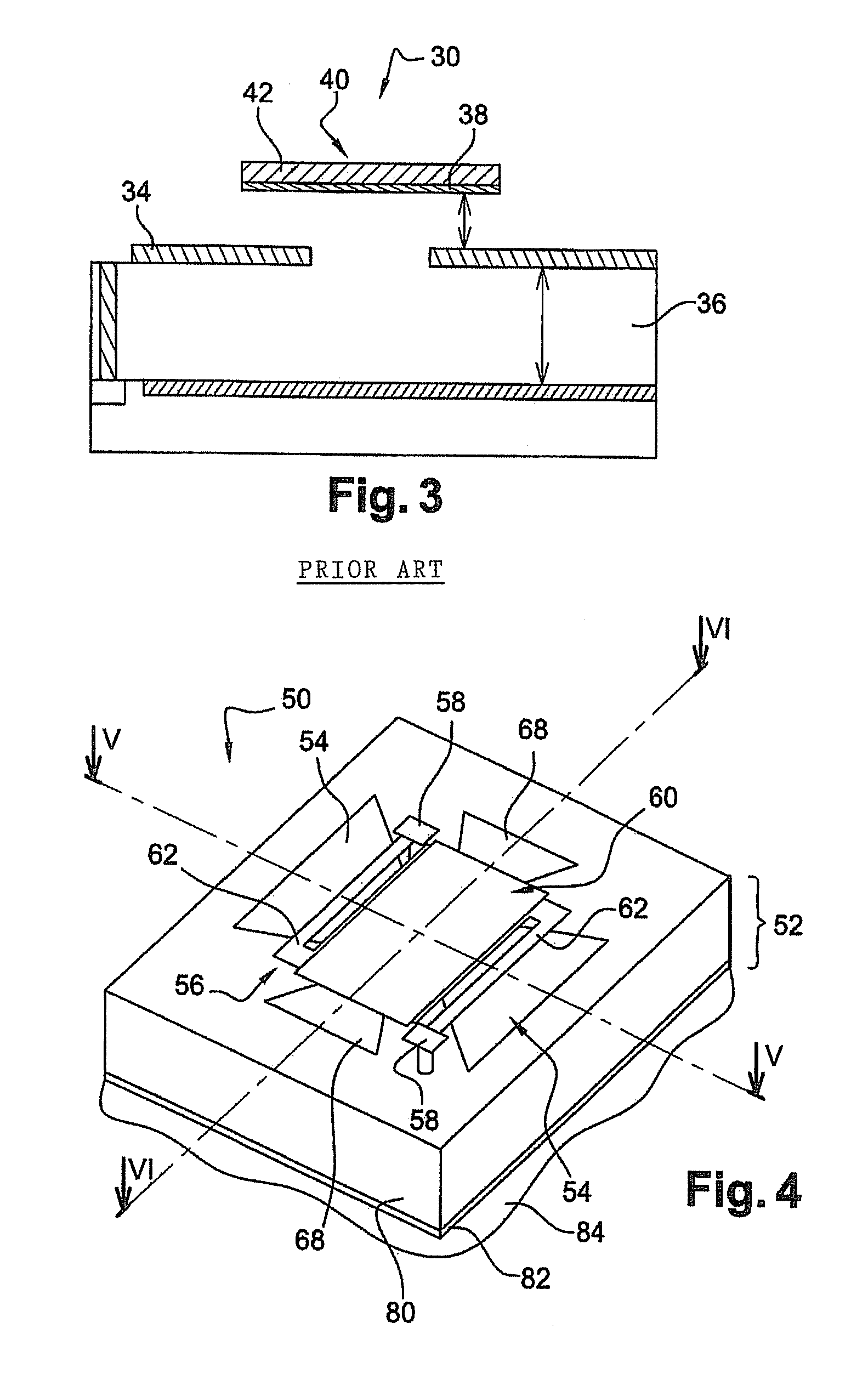Bolometric detector for detecting electromagnetic radiation in the region extending from infrared to terahertz frequencies and an array detection device comprising such detectors
a detector and electromagnetic radiation technology, applied in radiation pyrometry, instruments, material analysis, etc., can solve the problems of resistive load shape, inability to pick up inability to detect all available electromagnetic power, etc., to limit the absorption of stray radiation
- Summary
- Abstract
- Description
- Claims
- Application Information
AI Technical Summary
Benefits of technology
Problems solved by technology
Method used
Image
Examples
Embodiment Construction
[0060]An elementary bolometric detector 50 according to a first embodiment of the invention which is part of an array of elementary detectors is described below, making reference to FIGS. 4 to 7.
[0061]Bolometer 50 comprises insulating substrate 52 on which a first planar bow-tie antenna 54 made of a conductive material is deposited as well as a micro bridge 56 which is suspended above substrate 52 by two conductive posts 58.
[0062]Micro bridge 56 is formed by central part 60 and two thermal isolation arms 62 which connect central part 60 to posts 58 at right angles to the main axis (V-V) of first antenna 54. Micro bridge 56 comprises a first electrically insulating layer 64, a conductive layer 66 and, more especially, a metal film deposited on insulating layer 64.
[0063]A second bow-tie antenna 68 made of a conductive material and located crosswise relative to first antenna 54 and having its main axis (VI-VI) parallel to thermal isolation arms 62 is also formed on conductive layer 66 ...
PUM
 Login to View More
Login to View More Abstract
Description
Claims
Application Information
 Login to View More
Login to View More - R&D
- Intellectual Property
- Life Sciences
- Materials
- Tech Scout
- Unparalleled Data Quality
- Higher Quality Content
- 60% Fewer Hallucinations
Browse by: Latest US Patents, China's latest patents, Technical Efficacy Thesaurus, Application Domain, Technology Topic, Popular Technical Reports.
© 2025 PatSnap. All rights reserved.Legal|Privacy policy|Modern Slavery Act Transparency Statement|Sitemap|About US| Contact US: help@patsnap.com



